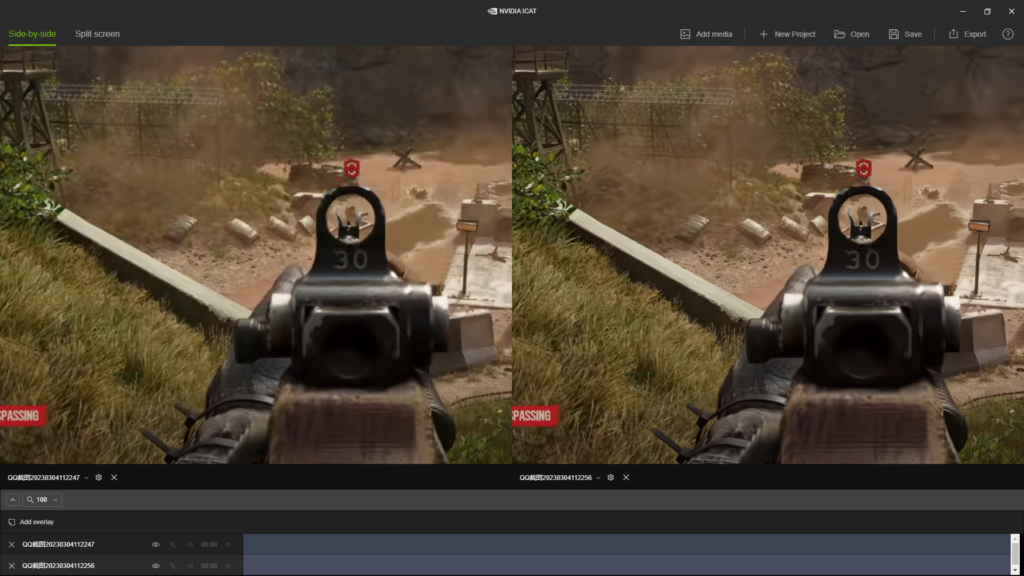Are you experiencing issues with Nvidia’s Virtual Super Resolution (VSR) not working as expected? You’re not alone.
Many users have encountered challenges with getting VSR to function properly on their systems.
In this guide, we’ll explore common reasons why Nvidia VSR may not be working and provide practical solutions to help you resolve these issues.

How To Fix Nvidia VSR Not Working?
To fix the Nvidia VSR (Virtual Super Resolution) not working, you can check GPU power consumption, update Nvidia drivers, and safe boot and clean driver installation. Moreover, you may also verify browser Compatibility, and enable VSR in Nvidia Control Panel.
Below is a detailed explanation of all the above-mentioned fixes:
1. Check GPU Power Consumption
Some users have reported that VSR may not work properly if the GPU power consumption is not sufficient.
You can monitor the GPU power consumption using tools like HWMonitor or MSI Afterburner. If the power consumption is low, it may indicate an issue with the GPU’s performance.
To check your GPU’s power consumption, follow these steps:
- Install GPU-Z: Download and install GPU-Z, which provides detailed information about your graphics card including power consumption.
- Run GPU-Z and Observe: Open GPU-Z, go to the ‘Sensors‘ tab, and look for the ‘GPU Power Draw‘ or similar parameter to see your GPU’s power usage in real time.
- Use HWiNFO for Additional Data: For more detailed information, you can also use HWiNFO. Install and run the software, then look under the GPU section in the status of the sensors to find power consumption metrics.
- Consider Hardware Power Meters: For a direct measurement, use a hardware power meter like ‘Kill A Watt‘ to measure the total power draw of your system, although this won’t isolate GPU power draw.
2. Update Nvidia Drivers
Ensure that you have the latest Nvidia drivers installed on your system. RTX VSR only works with Nvidia drivers of R350 or later, so updating to the latest driver version is essential.
To update your Nvidia drivers, follow these steps:
- Visit the Nvidia GeForce Experience website and download the application.
- Run the downloaded installer to install GeForce Experience on your computer.
- Launch the GeForce Experience application.
- Within the application, navigate to the ‘Drivers‘ tab to check for any available updates.
- Click on ‘Check for Updates‘ to see if there are new drivers available for your GPU.
- If an update is available, click ‘Download‘ to start downloading the latest driver.
- After downloading, click ‘Express Installation‘ to install the driver with the recommended settings.
- Reboot your computer to complete the installation process.
3. Safe Boot And Clean Driver Installation
Some users have found success by performing a clean driver installation after booting into Safe Mode.
This involves using tools like Display Driver Uninstaller (DDU) to remove the existing Nvidia drivers completely before reinstalling the latest version.
To safely boot and perform a clean driver installation for Nvidia graphics drivers, follow these steps:
- Download Display Driver Uninstaller (DDU): Obtain the latest version of DDU.
- Download the Latest Nvidia Driver: Visit the Nvidia Driver Download page and select your graphics card to download the appropriate driver.
- Enter Safe Mode:
- For Windows 10/11: Go to ‘Settings’ > ‘Update & Security’ > ‘Recovery‘, under ‘Advanced startup‘ click ‘Restart now‘. After the system reboots, navigate to ‘Troubleshoot’ > ‘Advanced options’ > ‘Startup Settings‘ and press ‘Restart‘. Once it restarts again, press the appropriate number to select ‘Enable Safe Mode’.
- Run DDU: In Safe Mode, run DDU, select ‘Nvidia‘ from the drop-down menu, and click ‘Clean and restart’. This will remove all traces of the Nvidia drivers and restart your PC.
- Install Nvidia Driver: After the PC restarts, run the Nvidia driver installer you downloaded earlier. Choose ‘Custom‘ installation, check ‘Perform a clean installation‘, and follow the prompts to install the driver.
- Restart Your PC: Once the driver installation is complete, restart your PC to exit Safe Mode and start Windows normally.
4. Verify Browser Compatibility
Another user on the NVIDIA GeForce Forums mentioned that VSR may not work in certain browsers such as Chrome. It was suggested that VSR worked in Edge but not in Chrome.
5. Enable VSR In Nvidia Control Panel
Enabling Video Super Resolution (VSR) in the Nvidia Control Panel is essential because VSR is a feature that enhances the quality of videos played on your computer.
- Right-click on your desktop and select “Nvidia Control Panel.”
- Navigate to “Manage 3D Settings” in the left pane.
- Under the Global Settings tab, find “DSR – Factors” and select the desired factors (e.g., 2.00x, 4.00x).
- Check the box next to “DSR – Smoothness” for smoother images.
- Click Apply to save changes.
6. Check Full-Screen Mode
Some users have reported issues with VSR not working in windowed or borderless windowed mode. Ensure that the game or application is running in full-screen mode to allow VSR to function properly.
- Click on your desktop with the right mouse button.
- Select “Nvidia Control Panel” from the context menu.
- In the Nvidia Control Panel, under the “Display” category, click on “Adjust desktop size and position.”
- If you have multiple displays, select the display you want to adjust from the list.
- Look for the scaling options and select “Full-screen” to ensure games and applications scale correctly to fill your screen.
- Click “Apply” to save your settings.
- Start your game or application and check if it now runs in full-screen mode.
7. Contact Nvidia Support

If none of the above steps work, there may be a deeper issue with your hardware or software. Contact Nvidia customer support for further assistance.
They will guide you with better options and help you resolve your issue better.
